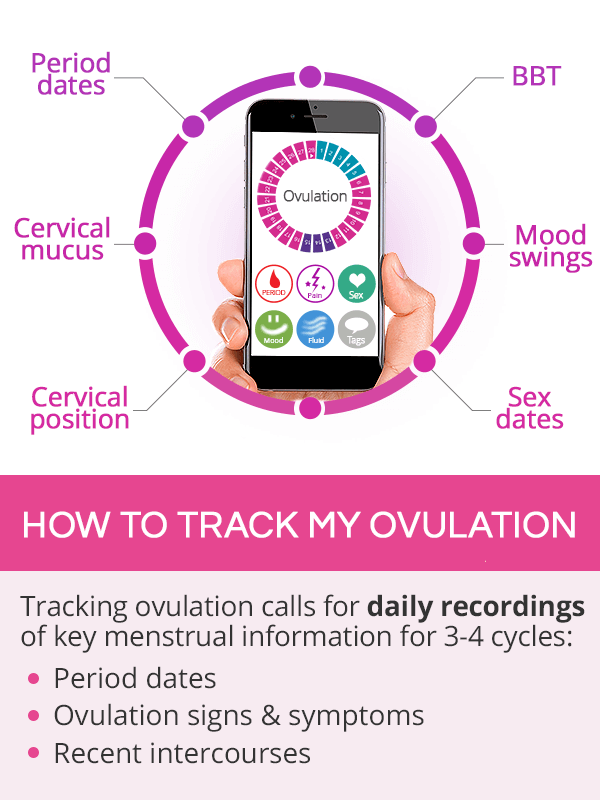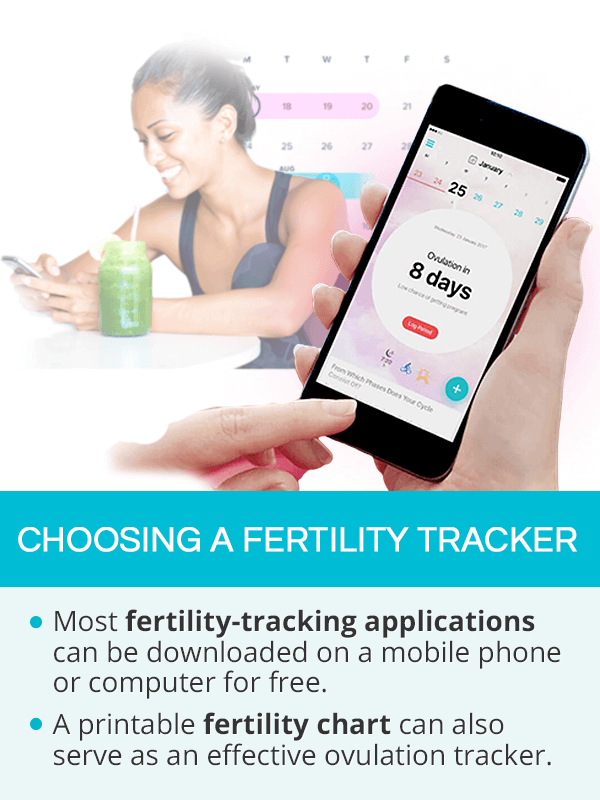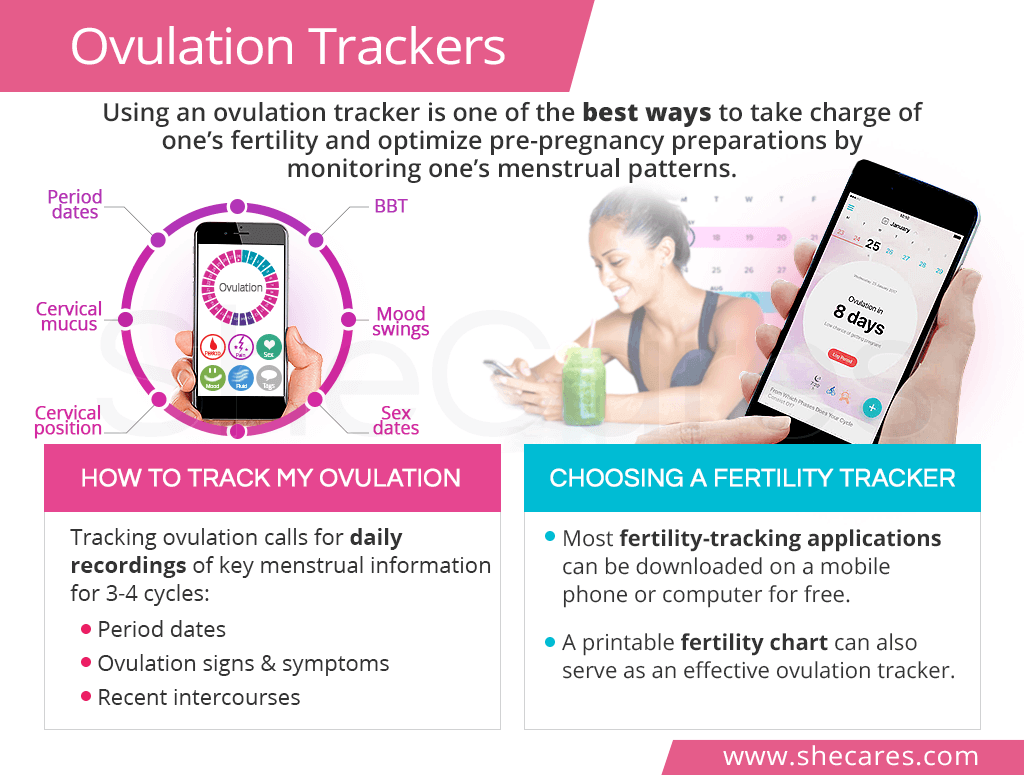What is an Ovulation Tracker?
An ovulation tracker is an online application that is designed to make estimating ovulation easier and more convenient.
These tools allow women to register a wide variety of information pertaining to their menstruation with the intention of learning how to predict upcoming ovulation days with more accuracy, thus increasing their chances of getting pregnant.
Ovulation tracking applications are customized to be used on a cellphone or a computer. Most of them can be downloaded for free, including some of the most common ones like Glow, Kindara, or Clue.
How to Track My Ovulation?

The best time to start using a fertility tracker is on the first day of a period. Recordings should be carried on daily for at least three to four months to produce reliable results.
A woman can register a number of observations throughout her menstrual cycle, which include:
- Period dates, which is the bare minimum that has to be recorded for an ovulation tracker to produce an ovulation prediction
- Ovulation signs, which are confirmed through self-assessment and at-home ovulation tests:
- Basal body temperature changes
- Consistency of cervical mucus
- Position of the cervix
- Luteinizing hormone (LH) surge
- Saliva ferning
- Ovulation symptoms, which are typically mild or absent all together:
- Bloating
- Mood swings
- Pelvic pain
- Breast tenderness
- Intercourses, including whether they were unprotected or with a form of contraception
Although detailed recordings ensure higher precision of ovulation predictions, a woman does not have to record all of the aforementioned information. She is, however, encouraged to choose a combination of period dates and at least one ovulation sign.
Choosing the Best Fertility Tracker

There are a number of free ovulation trackers online. The choice depends on personal preferences related to the graphic format, notification system, or other added features, such as community discussions, pregnancy articles, etc.
Although basic versions are mostly available for free, some brands offer more advanced types of their fertility trackers for a price.
It is always advisable to read the consumer reviews prior to downloading a period and ovulation tracker to make sure it is of a decent quality and produces dependable ovulation predictions.
Fertility Chart
Although mobile ovulation trackers are by far the most popular, women who prefer using a pen-and-paper predictor might like the idea of maintaining a fertility chart.
It is an easy-to-fill-out and interpretive type of a fertility tracker that allows for registering the same menstrual data as its mobile equivalent. A diligent collection of data over a period of at least three months will help a woman notice ovulation cycle trends to better time her intercourse.
Key Takeaways
Using an ovulation tracker can be of immense help to women preparing to get pregnant. There is a wide variety of effective ovulation-tracking applications available for free, which can be mobile- or computer-customized. Taking advantage of a fertility tracker gives women a chance to collect the most important observations about their menstrual rhythms in an easy and convenient way. It also enables them to receive accurate predictions about the time of the month when they are the most fertile so that they can plan intercourse accordingly to increase their chances of successful conception.
Sources
- American Pregnancy Association. (2018). Ovulation Calendar. Retrieved September 18, 2018 from http://americanpregnancy.org/ovulation-calendar/
- British Medical Journal. (2000). The timing of the “fertile window” in the menstrual cycle: day specific estimates from a prospective study. Retrieved September 19, 2018 from https://www.ncbi.nlm.nih.gov/pmc/articles/PMC27529/
- March of Dimes. (n.d.). Ovulation calendar. Retrieved September 18, 2018 from https://www.marchofdimes.org/pregnancy/ovulation-calendar.aspx
- Medline Plus. (2018). Pregnancy – Identifying fertile days. Retrieved September 18, 2018 from https://medlineplus.gov/ency/article/007015.htm
- Office on Women's Health. (n.d.). Trying to conceive. Retrieved September 19, 2018 from https://www.womenshealth.gov/pregnancy/you-get-pregnant/trying-conceive
- Planned Parenthood. (n.d.). Fertility Awareness Methods. Retrieved September 19, 2018 from https://www.plannedparenthood.org/learn/birth-control/fertility-awareness
- Your Fertility. (2018). Getting the timing right. Retrieved September 18, 2018 from https://www.yourfertility.org.au/everyone/timing


